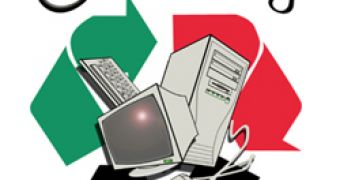Most hardware manufacturers and vendors, from processors to hard disk drives manufacturers, are claiming that their products are going green, which means better energy efficiency while keeping performance at a high level. While this may very well be the truth, the high power to performance ratios are not enough to stop the increasing power consumption that is currently registered across data centers and other places where computer systems (mostly servers) are used day and night.
While power consumption rises, using more energy efficient hardware parts sounds at least strange, a white paper titled "The Invisible Crisis in the Data Center: The Economic Meltdown of Moore's Law" written by a research team at the Uptime Institute explains how such a paradox can exist. Their argument is based on recorded facts and uses a simple mathematical approach. For instance, they say that the server computing power tripled every two years since the year 2000, while the energy consumption only doubled during the same period because of the implementation of energy saving technologies. As a direct result of these two trends in technology and power consumption, between 2000 and 2006, the computing power of servers grew by a factor of 27, while the power consumption only grew eight times.
"This simply means that even using the most advanced power saving technologies available, the power consumption registered at a wall plug increased by 3.4 times. Along side the hardware that needs quite a lot of power to operate, because of the increasing computing power of processors, graphics chips and just about everything else, while using the same physical sizes, the cooling solutions are the new energy sponges of the new computers. As computers become more powerful, a technology that may have a great impact on the power saving trend is the virtualization that should enable IT departments to use a smaller number of physical servers while keeping all their applications and different environments intact, but this would be only a temporary solution as the Uptime Institute says: After virtualization has taken some of the slack out of underemployed IT hardware, the trend in power growth will resume".
In the long run, the Environment Protection Agency( EPA for short) warns that the energy consumption registered by data centers and other large computing facilities will soon double. EPA recommends a line of programs and regulations to standardize the measuring and the implementation of power saving features as well as the performance measurements : "The federal government and industry should work together to develop an objective, credible energy performance rating system for data centers, initially addressing the infrastructure portion but extending, when possible, to include a companion metric for the productivity and work output of IT equipment".

 14 DAY TRIAL //
14 DAY TRIAL //